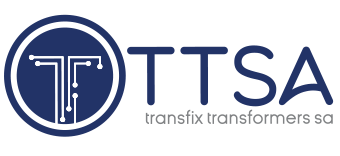State-owned utility Eskom says it continues to take decisive action following the disclosure in its full-year 2024 financial results, released in December 2024, of a forensic report detailing the breach of its Online Vending System (OVS). The system was exploited to generate and distribute fraudulent prepaid electricity tokens, revealing critical vulnerabilities in both the physical and cybersecurity components of the utility’s prepaid electricity infrastructure.
In this opinion article, Dr Jonty Cogger and Paul Wani Lado, attorneys at the Centre for Environmental Rights, argue that the ‘gas cliff’ should not be used as a justification for building large-scale gas-to-power infrastructure without fully assessing the risks and cost implications. South Africa is approaching what many call the “gas cliff”. By 2028, the country’s main supply of natural gas from Mozambique is expected to run out. This has triggered concern in government and industry circles, with calls for urgent investment in new gas infrastructure (pipelines, import terminals, regasification facilities and storage) to allow for the import of liquefied natural gas (LNG).
The Energy Council of South Africa is strongly supportive of the goal of launching the initial phase of the South African Wholesale Electricity Market (SAWEM) in early 2026, arguing that the platform is key to sustaining reform momentum in the electricity sector amid signs of a slowdown. The National Transmission Company South Africa (NTCSA), which has applied for a Market Operator licence, has indicated the SAWEM will be launched in a phased approach starting on April 1.
Africa’s largest standalone battery energy storage system (BESS) project, the 153 MW/ 612 MWh Red Sands project in the Northern Cape, has reached financial close, having raised some R5.4-billion in debt financing from Absa and Standard Bank. The project was selected as a preferred bidder in 2024 following the first BESS public procurement bidding round, and is being developed by Globeleq in partnership with African Rainbow Energy.
Zambia’s President Hakainde Hichilema on Monday opened the country’s biggest grid-connected solar power plant, built by PowerChina, which will supply electricity to copper miner First Quantum Minerals. The 100 megawatt Chisamba project is expected to reduce the Southern African country’s reliance on electricity imports from neighbours South Africa and Mozambique.
Explosives and chemicals group AECI is expecting an operational recovery at its iconic Modderfontein plant in the second half of 2025, following a difficult first few months to the year when output was affected by a disruption to the supply of electricity and a key input material. However, the long-term outlook for the site, which has been a feature of the South African industrial landscape for more than a century, is uncertain.
The 153 MW/ 612 MWh Red Sands battery energy storage system (BESS) project in the Northern Cape has advanced to commercial close, following the signing of project agreements with the Department of Electricity and Energy and the National Transmission Company South Africa (NTCSA). The project is being developed by Globeleq in partnership with African Rainbow Energy, and was selected as a preferred bidder in 2024 under South Africa’s inaugural BESS bidding round for 513 MW/ 2 952 MWh across five substation sites selected in the same province by the NTCSA.
State-owned Transnet National Ports Authority (TNPA) has issued a request for proposals (RFP) for the appointment of a terminal operator to fund, design, develop, construct, operate, maintain and transfer a liquid bulk terminal at the Port of Ngqura, for a concession period of 25 years. The RFP is a key step in the relocation of the tank farm from the Port of Port Elizabeth to the Port of Ngqura, in line with approved port development plans.
In this opinion article, Professor Vally Padayachee outlines a proposed pathway for ensuring the safe and affordable adoption of small-scale embedded generation (SSEG) systems, such as rooftop solar. The article outlines the challenges associated with widespread SSEG adoption, including inconsistent policies, high compliance costs, unclear standards, and safety concerns. However, Padayachee also provides a “position paper on a proposed standardised, harmonised, and affordability driven …
Black wattle trees, an invasive species, outcompete native plant species, thereby reducing biodiversity and significantly impacting on water resources, which is why Eastern-Cape-based wildlife reserve Lalibela approached the Coega Biomass Centre (CBC) for a mutually-beneficial solution. Black wattle, Acacia mearnsii, is an invasive species that arrived in South Africa from Australasia. A single adult tree can absorb up to 40 ℓ/d of underground water, and the plants spread rapidly. According to the National Environmental Management Biodiversity and the Alien and Invasive Species Regulations, landowners are legally required to manage these species.
INDUSTRY NEWS
WHERE TO FIND US
Address
9 Yellow Street
Botshabelo Industrial Area
Botshabelo, Free State
Call / Email Us
Tel: +27 (0) 61 956 6772
Email: info@transfix.co.za
